The Product Manager’s Roadmap to Product-Led Growth
Business growth is not tied to a specific form. It can come in the form of market expansion or market penetration. Similarly, you can achieve growth in various ways. Sales-led growth might be a popular growth model, but that’s not to say you can’t use other strategies. That’s especially true with the prevalence of product-led growth.
If you’re interested in employing this growth strategy, you’re in luck. Read on as we review its definition, potential benefits, step-by-step guide, and some examples.
Table of Contents
- What is product-led growth?
- What makes product-led growth different?
- Why choose product-led growth?
- How can you implement a product-led growth strategy?
- Real-life examples of successful product-led companies
- Parting words: product-led growth
- Machine Learning In Finance: 12 Essential Applications
- How To Create Interactive Compliance Training For Bank Employees
- How Fintech Apps Are Using Gamification To Increase User Engagement
- Top Gamification Companies for Employee & Customer Engagement
What is product-led growth?
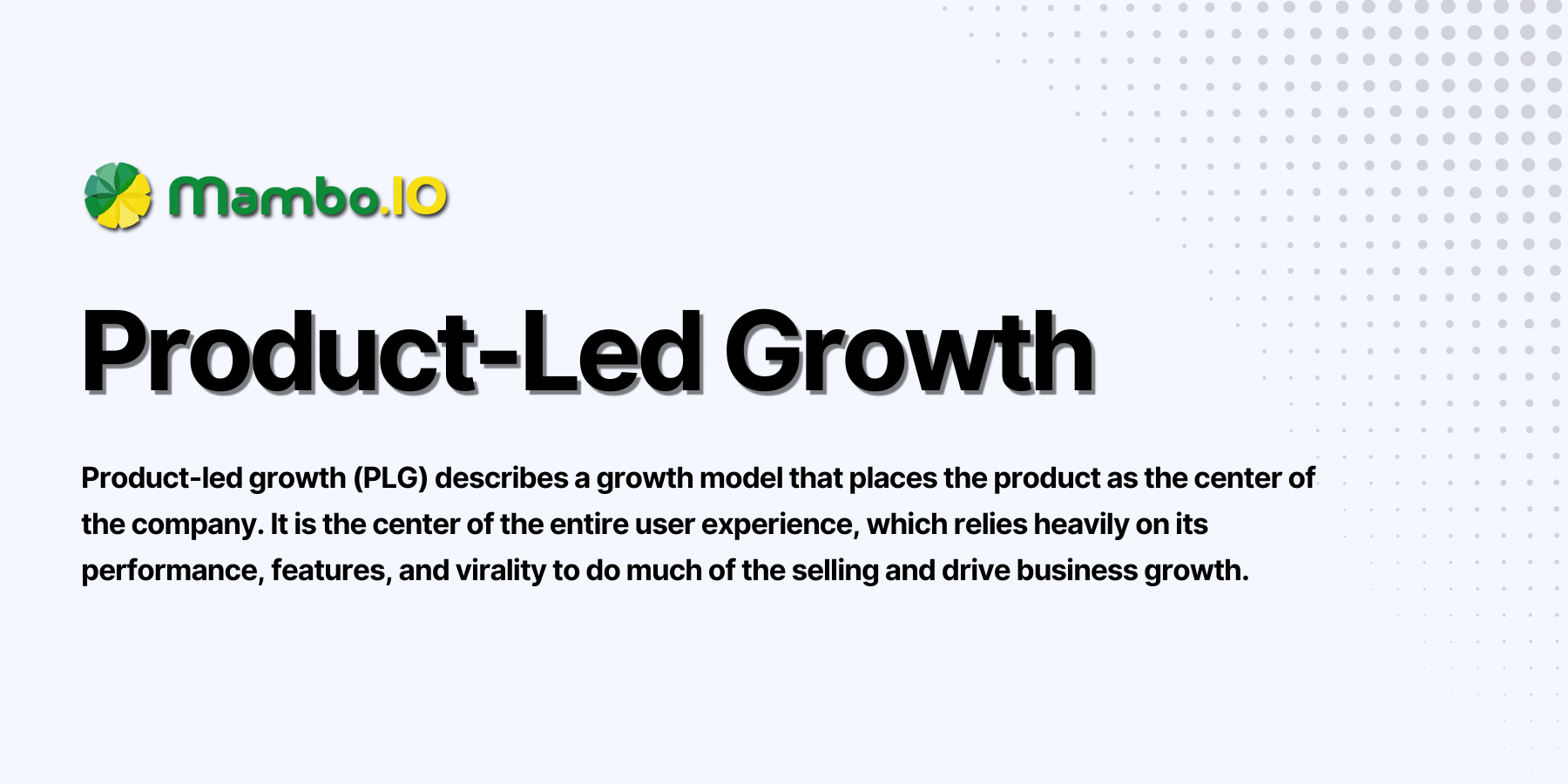
As the name implies, product-led growth (PLG) is a growth model that revolves around the product. It’s one of the more popular growth models, especially today.
With product-led growth, your goal is to create the best version of your product, hoping it would drive growth.
Successful implementation of this strategy allows your product to help you:
- Acquire new users.
- Retain the existing ones.
- Expand your user base.
In short, it drives acquisition, retention, and expansion. Of course, that’s not all it can provide, but you get the point. Now, one may argue that the product-led strategy isn’t any different from its alternatives. However, that’s often far from reality.
What makes product-led growth different?
People often compare product-led growth with marketing-led and sales-led growth, two similarly popular growth models. Though they can be challenging to differentiate, it should be easier if you keep these four questions in mind:
- What drives company success?
- Which types of companies commonly leverage the model?
- What is the entry point of customers?
- Which teams are the most important?
Product-led growth
Here’s how product-led growth approaches each of these questions:
- Company success relies on the product’s performance (users, reviews, etc.).
- The PLG model is most common among software products.
- The company’s flagship product is the entry point for customers.
- Every team within the company plays equally-important roles.
Sales-led growth

Sales-led growth is a model that revolves around sales. The idea is simple: more sales = more growth. Here’s what the four aspects look like in a sales-led company.
- Company success depends on how well the sales team performs.
- SLG is most common among service-based and B2B companies.
- The sales team is the entry point for customers.
- The sales team is the most crucial department of the company.
Marketing-led growth
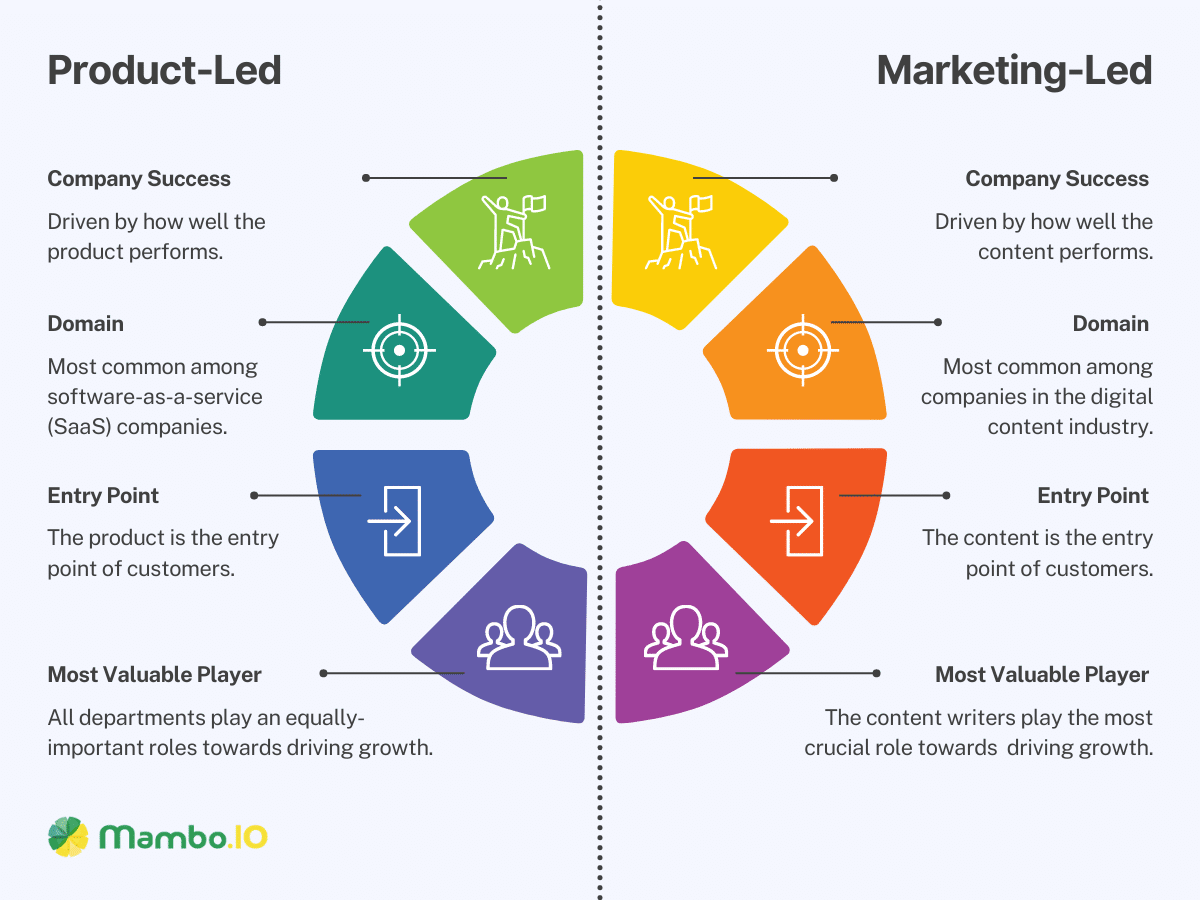
If a person is likely to become a customer after consuming your content, you’re a marketing-led company. This “content” may come in the form of blogs or videos.
Ahrefs and HubSpot are excellent examples of marketing-led companies.
In this type of growth model, the four aspects are as follows:
- Company success depends on how well the content performs.
- MLG is most common among companies in the digital content industry.
- The content is the entry point for customers.
- The marketing team, a.k.a. the content writers and creators, is the most crucial department of the company.
All these strategies are effective in general. But depending on your business, one is more effective than the rest. That being said, is the product-led growth model your best option? Read on to find out.
Why choose product-led growth?
#1. Shorter sales cycles
Sales cycles refer to the steps to gather leads and turn them into paying customers. In a sales-led company, the sales cycle usually goes like this:
- Find leads (Prospecting).
- Connect with them (Connect).
- Determine if they are potential customers (Qualify).
- Present your product (Present).
- Handle their objections (Handle objection).
- Close the sale (Closing).
- Follow up and get referrals (Referrals).

That’s what the typical sales cycle looks like, but the cycle is a bit different in a product-led company. More specifically, it’s shorter, and that’s because the users take those steps themselves rather than the salesperson. It usually goes like this.
- Users look for a solution to their problem (Evaluate).
- People find your product through your marketing efforts or a referral from a friend or acquaintance (Activation).
- Users find your product helpful, so they habitually use it regularly (Adoption).
- The product benefits the users who intend to dive deeply into its features (Expansion).
- Users like the product so much that they often talk about it with friends and acquaintances (Advocate).
What’s interesting is your input (sales and marketing) is only necessary from steps #1 to #2. Beyond that point, the user takes it upon themself to guide themself through the sales cycle. Since the sales cycle is much shorter, converting a prospect into a customer takes less time. This then results in more revenue over specified periods.
#2. Lower customer acquisition costs
Customer acquisition costs (CAC) refer to how much you spend to get a single paying customer. That usually correlates to how much your marketing expenses are.
Naturally, the lower it is, the better for the company’s bottom line.
The product-led growth strategy excels in this regard because there’s often no marketing or advertising involved with the model. Compare that to sales-led companies that typically invest a lot of workforce and money in marketing.
Imagine this:
The sales cycle of sales-led growth is like stairs—to move from one step to another, you must put in effort. You must stand up, lift your leg, and take the step.
Meanwhile, with PLG, the sales cycle is like a wheel—you only need to push it occasionally. The momentum will keep the wheel spinning until it’s not, at which point you try it again. In this context, the “push” would be your marketing effort.
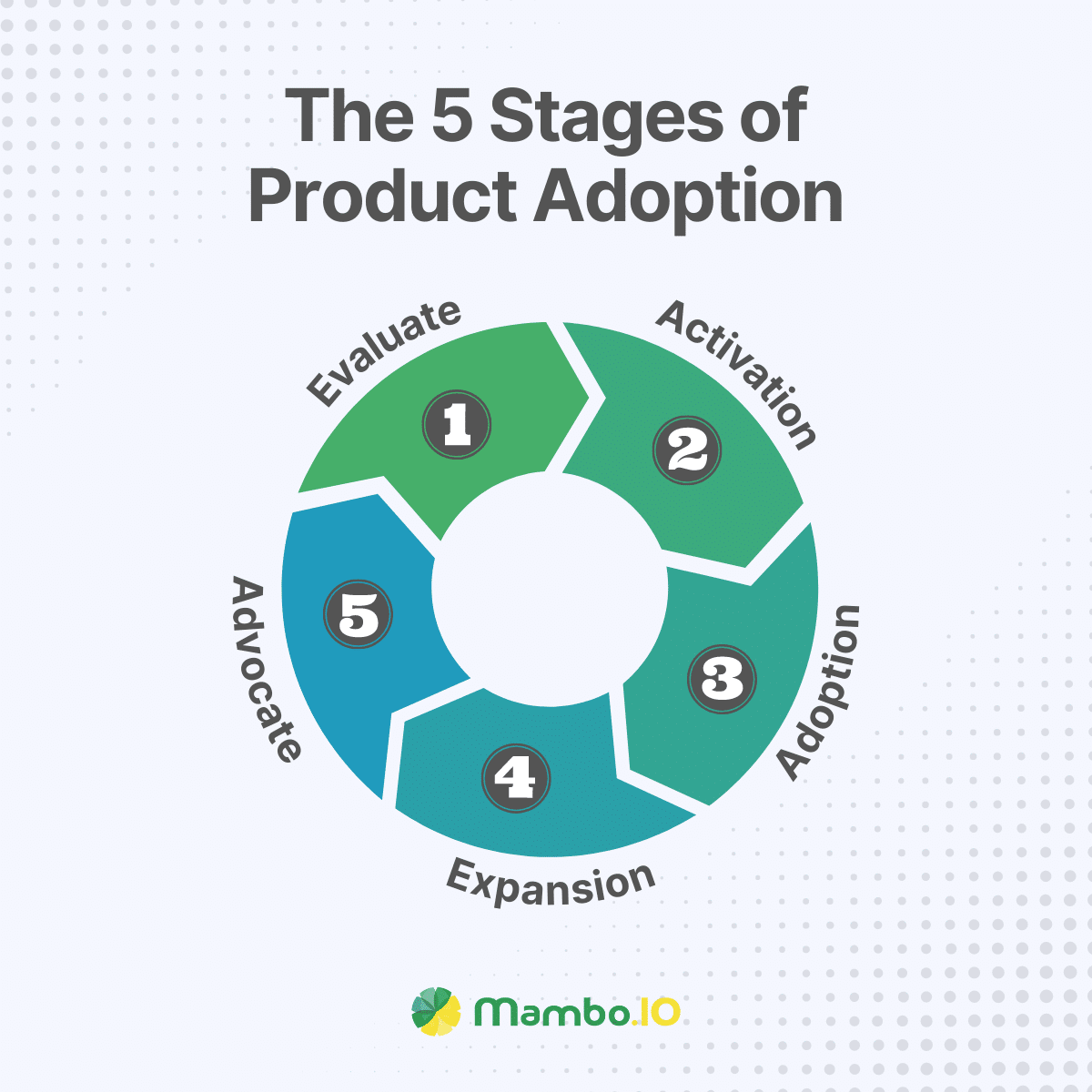
Once the user knows about your product, they go through the cycle themselves.
If that isn’t convincing enough, it helps to know that product-led companies have 40% lower CAC than traditional companies.
#3. Better user experience
A product-led company would spend the better part of its resources on polishing the product. The product will turn out much better than it would’ve been usually.
So, how is this relevant to growth or success in general?
Well, to start with, it’s established that bad UX can result in bad business.

Source: Amazon Web Services
In fact, this study by Amazon Web Services shows that eCommerce businesses lose 35% of sales due to bad UX. Simply put, bad UX = loss, while good UX = growth.
#4. Higher customer lifetime value
Another benefit that an overall better product brings is higher customer lifetime value.
Customer lifetime value (CLV) refers to how much a customer spends on average over their entire relationship with your company. You calculate by multiplying how long your customers typically remain customers by how much they spend regularly.
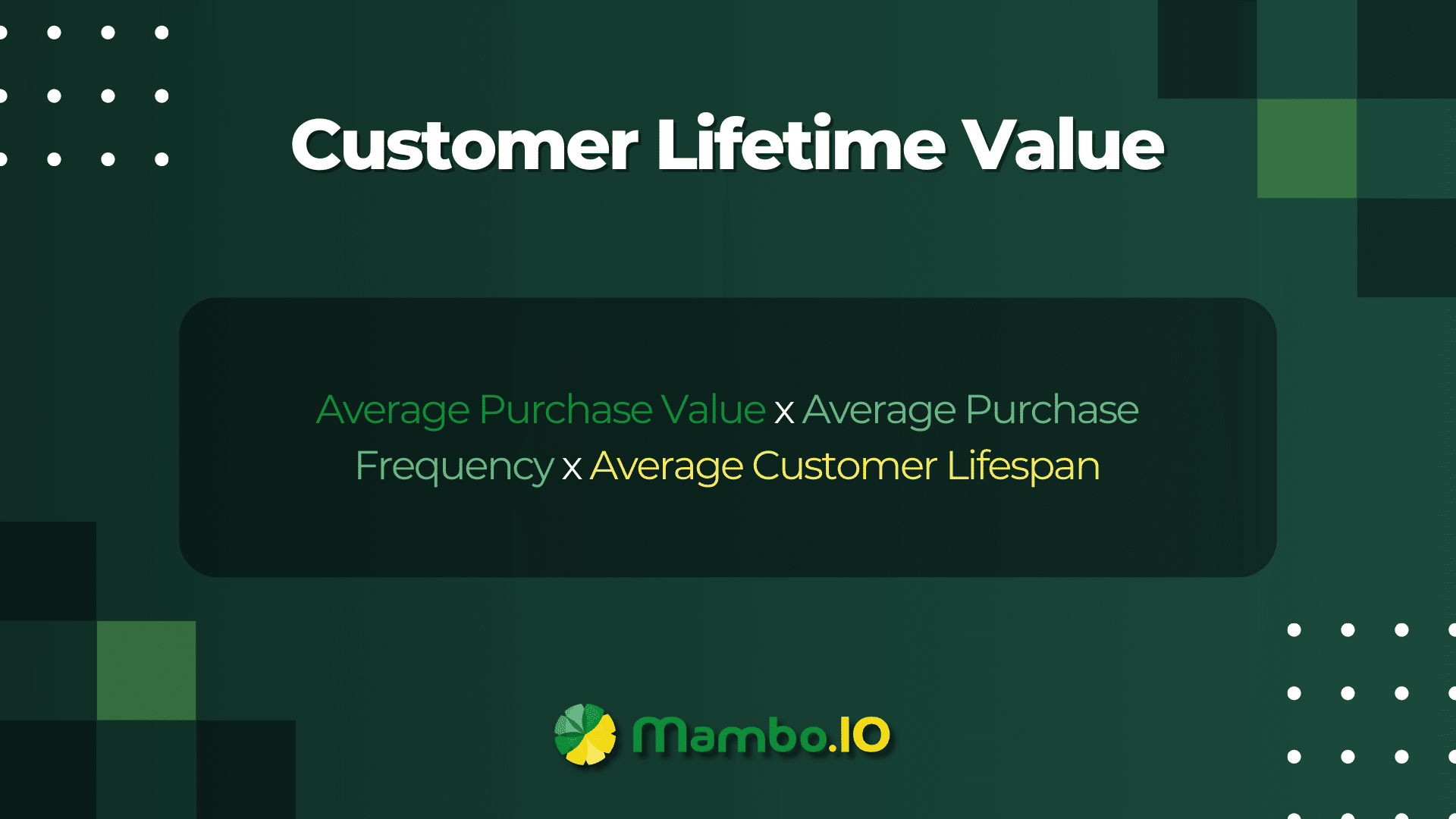
In short, a long relationship with your brand = higher CLV, and a higher CLV = higher revenue. Similarly, the more they spend regularly =, the higher CLV and, therefore, revenue.
You can improve the CLV by increasing your prices or making them remain customers longer. PLG achieves the latter by creating a better product.
After all, if the product is better, users would find it harder to leave.
#5. Minimal organisational silos
A common problem in a sales-led company is the prominence of organisational silos.
A silo is when a company separates its different departments. While a non-issue on paper, silos have proven to be quite disadvantageous to companies that use them.
Here’s an example of what this looks like:
The marketing team gathers leads. The sales team takes these leads, and then tries to convert them into customers. While doing so, there’s a chance they make promises to the leads, such as providing 24/7 support and whatnot.
The problem is the customer success/support team was likely not informed of this since they are separate teams.

Source: Medium
You know how that goes: the customer would be disappointed, leave negative reviews about customer support, etc. This issue is non-existent in PLG.
That’s because PLG revolves around cross-functional teams, wherein every department works towards the same goal—enhancing user experience.
#6. Consumers prefer self-checkout
This study shows consumers prefer buying items themselves rather than being guided to purchase. As it happens, PLG’s principles align with this logic.
With product-led growth strategies, you allow users to try out or buy your product without assigning a salesperson to them. The user onboards themselves.
Needless to say, the PLG model offers a business many benefits. But the question remains: How can you implement product-led growth and reap its benefits?
How can you implement a product-led growth strategy?
Before anything else, it’s essential to establish what a product-led company usually looks like. That is, after all, what you must work towards in this section.
A product-led company usually consists of the following components:
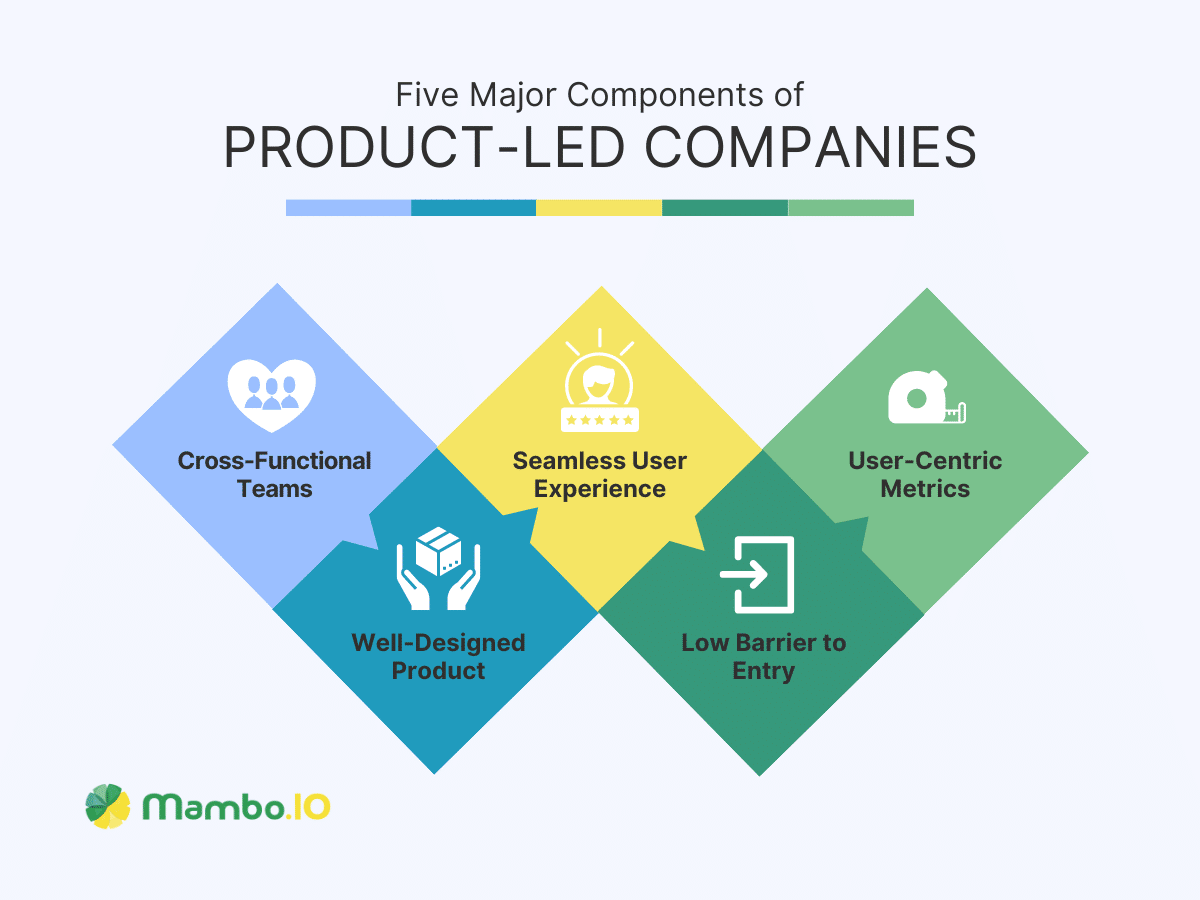
- Cross-functional teams.
- Well-designed product.
- Seamless user experience.
- Low barrier to entry.
- User-centric metrics.
As far as implementation is concerned, your goal is to ensure these four components are present in your company. Here’s how that would usually play out.
#1. Ensure alignment throughout the company
First off, you need to establish cross-functional teams.
This doesn’t mean you must create teams from scratch. You simply have to make your existing teams cross-functional. It’s as simple as giving them the simple instruction:
Everything you do must align with the product.
In doing so, you’re establishing a common goal for all your teams to work towards.
At this point, everyone must ask themselves this first before taking action:
By doing this, will I help deliver the best product experience?
Let’s take the marketing department, for example.
Suppose your business offers a project management tool. One way the marketing team can help deliver the best product experience is to create educational content.
Another example would be with the customer support team.
Imagine the same business has users encountering some bugs while using the tool.
A product-led company would have streamlined processes so the customer support team can quickly track and resolve these bugs.
#2. Establish a PLG dream team
Although cross-functional teams should contribute significantly towards product-led growth, you still need a team to lead this strategy. That’s where the PLG team comes in. It’s relatively simple; you don’t have to create the team from scratch.
Some of the human resources you need is already available in your organisation. But you may also have to hire new people. The team should consist of the following roles:
- Product manager – The leader of the team. They would supervise everything and is often the bridge connecting the stakeholders to the team.
- UX designer – They are in charge of creating user-friendly experiences within the product.
- Software engineer – All your ideas are turned into reality by none other than the software engineer.
- Product marketer – Whenever the product gets an update through a new feature or quality change, the marketer spreads the word.
- Customer support – Bugs, issues, and other concerns about the product will inevitably pop up. A customer support representative will handle this matter.
- Analyst – Metrics would play a significant role in improving the product experience. The analyst will get the data you need and run the much-need analytics and experiments.
With this lineup, the product-led growth strategy should be in good hands.
#3. Conduct a product audit
Of course, the best product experience isn’t possible without a well-designed product, hence why it’s crucial in product-led growth.
One way to craft well-designed products is to audit your existing product. This audit is mostly to identify opportunities for improvement.
Improvements can take various forms, like:
- UI changes, such as making a button more visible.
- Adding tooltips or any other type of text.
- Changing the order of steps to take.
- Adding more features.
- Quality of life changes.
Keep in mind that not all opportunities will lead to an improvement.
Some changes you make might not be taken positively by your users. That’s why experimentation is encouraged when implementing the product-led growth model.
#4. Map out the user journey

Source: Appcues
When talking about product experience, there is such a thing called user friction. It refers to anything that may prevent the user from accomplishing their goals. It can be either emotional, cognitive, or interactive. Here’s a look at what each type entails:
- Cognitive friction – This happens when a task requires much more thinking.
- Interaction friction – This refers to when the interface is confusing, making it harder for the user to navigate.
- Emotional friction – Anything related to the product that may cause negative emotions that prevent the user from doing what they want.
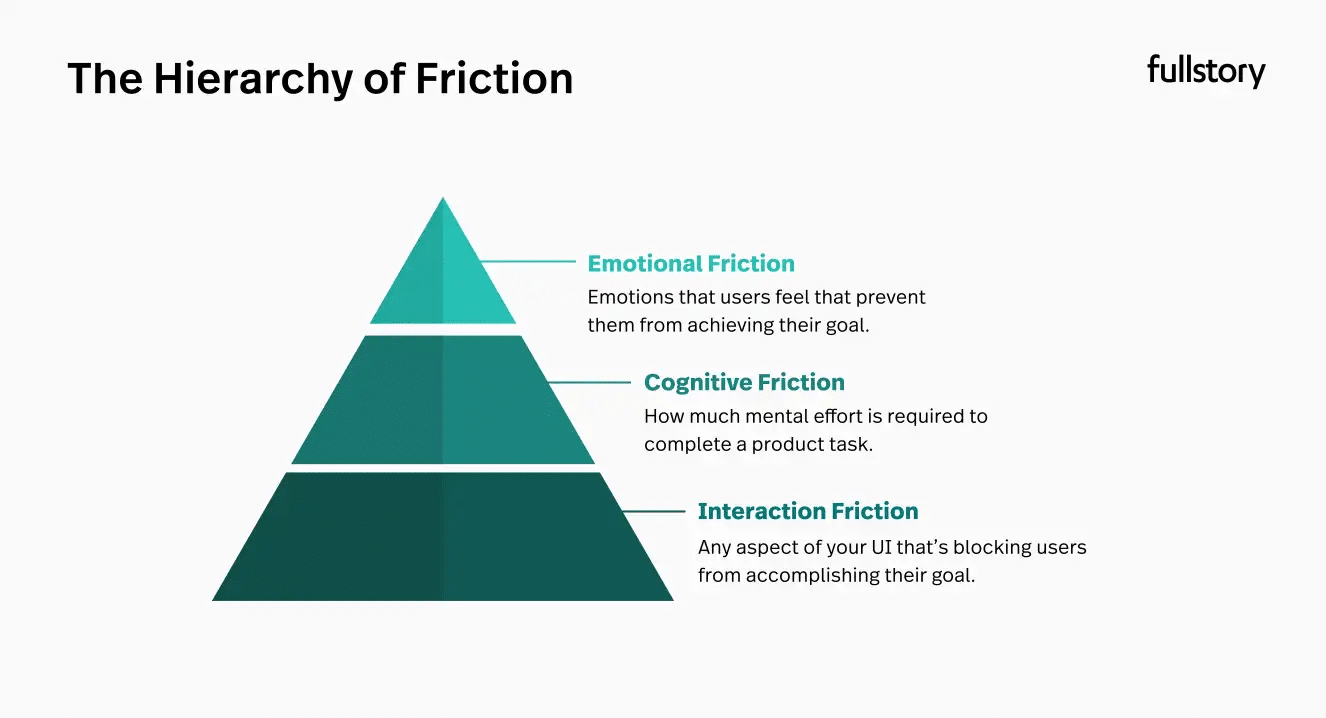
Source: fullstory
The general rule of thumb is the less user friction, the better.
That’s why your goal is to minimise it as much as possible. But of course, that requires a deep understanding of your product’s user journey, hence this step.
By mapping out the user journey, you can spot moments likely to result in user friction. It’s like laying down your clothes so you can spot stains more easily.
Duolingo is an excellent example of a product that was able to deal with user friction successfully. Duolingo helps users learn languages. The user friction that prevents people from using the app is that learning languages can be challenging.
Duolingo solved this by using gamification elements to make the app more enjoyable despite the challenge. If you’re interested in employing the same strategy, you may have to learn about gamification elements first.
#5. Transition to PLG product models
You now have a product ready for launch. Next, you must ask yourself how you will launch the product. More specifically: In what form should you offer it?
Thankfully, in a PLG model, options are already available. Interestingly, all these options result in a low barrier to entry—one of the critical components of PLG.
- Freemium – This model is a lightweight version of your product. It’s free forever, but there are some limitations. For instance, there are most definitely features it lacks that exist in the paid version. Of course, you must always include the most crucial feature to convince the user to buy the full version.
- Free trial – A free trial offers the product in total so that users can experience it fully. The only limit is time, usually 30 days. It’s up to you if yours would be longer or shorter. Regardless, at the end of the trial, you must give users the option to continue using the product by paying or not by cancelling the test.
- Demos – This model is most prominent in websites. It allows you to get a glimpse of the product through a demo. It’s like a much, much shorter version of a free trial. Mambo, a gamification solutions provider, employs this strategy and even personalises the experience based on the user’s purpose.
While all these might as well be excellent options, there’s always one that fits your business more than others. So, make sure you take your time choosing.
#6. Establish metrics to measure
Every project is tied to specific metrics. After all, you need to have a way to measure your success. In the case of product-led growth, those would be user-centric metrics.
These may include:
- Conversion rate.
- Customer acquisition cost.
- Customer churn rate.
- Customer retention rate.
- Time to value.
- Usage churn rate.
With these steps, you can at least jumpstart your product-led growth journey. But to help you further, you can look at the following companies as examples.
Real-life examples of successful product-led companies

Source: Bessemer Venture Partners
#1. Slack
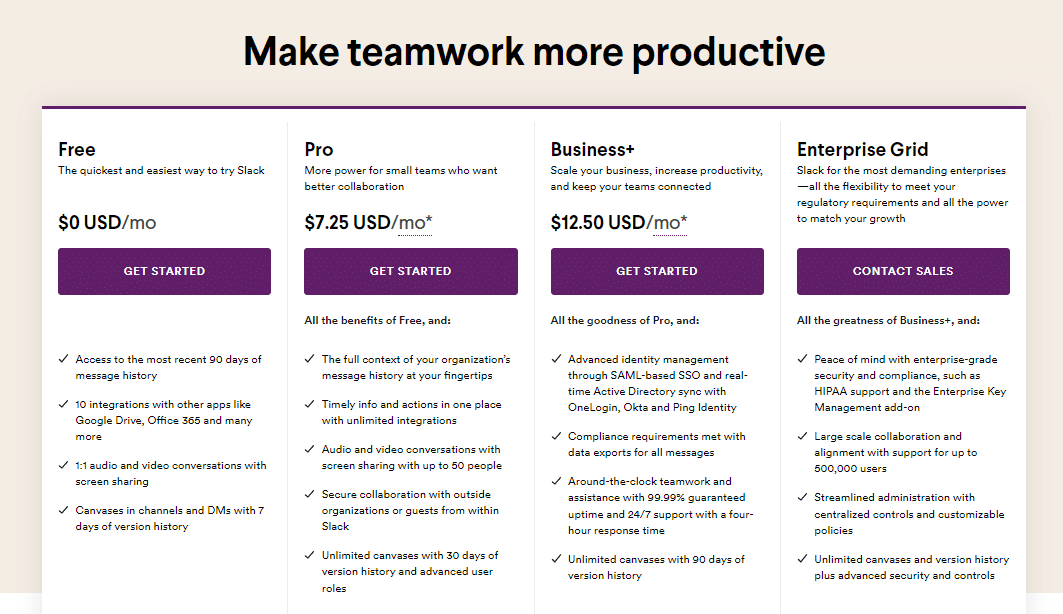
Source: Slack
Slack offers a freemium plan, allowing users to enjoy most of the platform’s features for free. Considering how the platform is full of features and functionality, users enjoy their experience most of the time. As a result, they become loyal and active users.
The end goal would be for existing customers to refer to your product. Slack achieves this easily since users are encouraged to invite others to their network.
#2. DocuSign
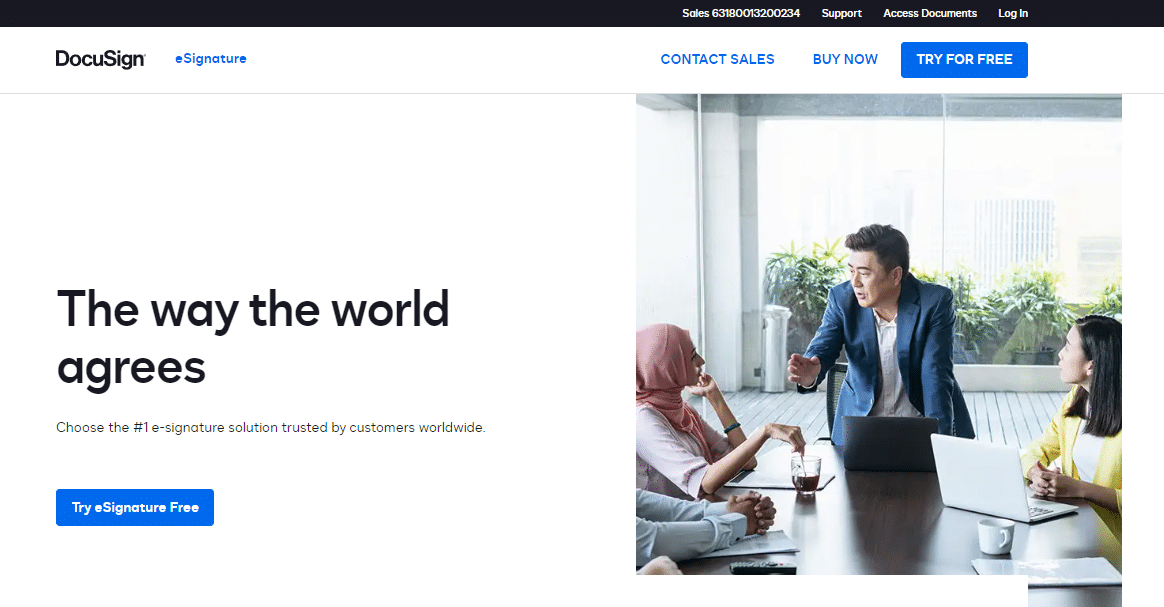
Source: DocuSign
DocuSign employs the free trial model. They offer the complete product version, including features like document generation and contract management, for free.
The free trial lasts 30 days and doesn’t require a credit card or account.
This results in an incredibly seamless user experience, hence their success.
#3. HubSpot
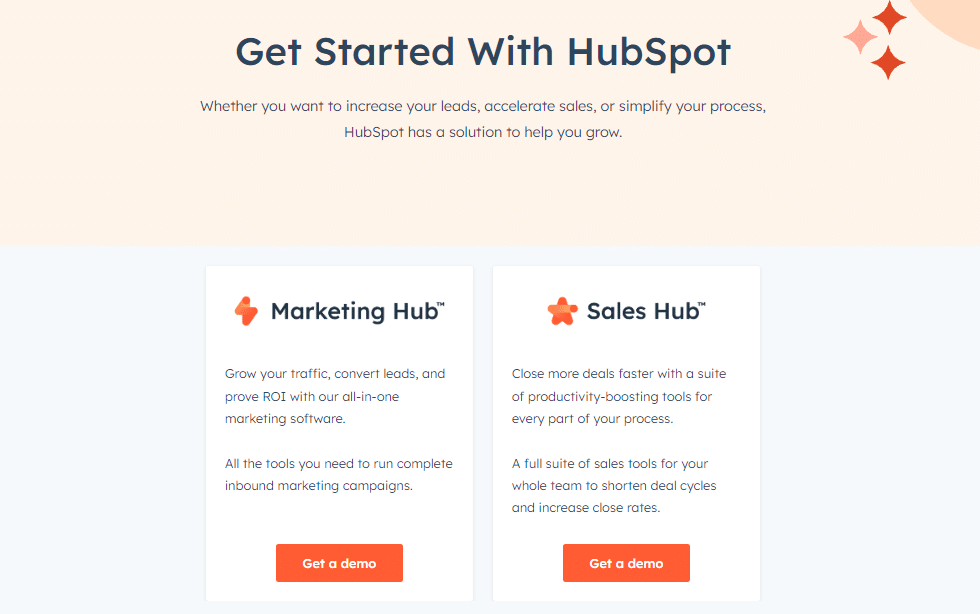
Source: HubSpot
HubSpot employs the same model as Slack—a freemium model.
They offer a free plan for a limited version of their CRM platform. It’s free forever, but in addition to the limited functionality, it limits the number of users to five.
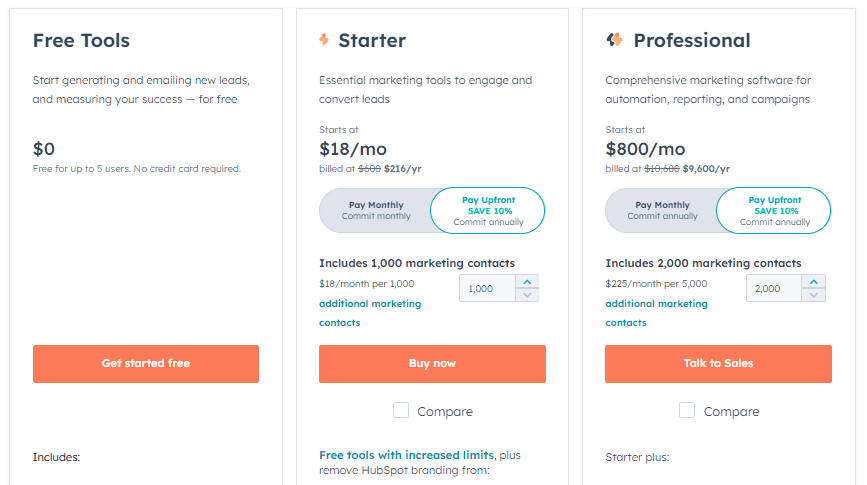
Source: HubSpot
But despite how restrictive the freemium product of HubSpot tends to be, many users still come to love it. That’s because while there are features free users cannot access, the ones they can are good enough by themselves. In short, this gives them the expectation that if the free features are excellent, so should the paid ones.
These examples just go to show the potential of product-led growth. But then again, their product was so good that it was impossible to fail.
Parting words: product-led growth
While product-led growth is the best growth model, it ultimately depends on your company. Some companies would benefit a lot from it, but there will surely be others that won’t, at least not as much as with other strategies. That’s why an understanding of not only the concept of PLG but also your company is crucial.
That goes for every strategy out there, but even more so with product-led growth, as it is incredibly costly. There are, however, strategies you can try for free.
If you want to employ gamification as part of your product model, consider looking into Mambo. Book a demo now to find out how we can help your company.
Download your free
“Gamification Guide”
Get your PDF now and start transforming your approach to digital engagement!
Latest Posts
Machine Learning In Finance: 12 Essential Applications
The impact of machine learning on finance is significant. Thanks to this technology, financial institutions are now equipped to make efficient decisions. Through the analysis of data sets, machine learning […]
How To Create Interactive Compliance Training For Bank Employees
Banking compliance training isn’t just another task. It’s the stage where everything else performs. Banks must navigate a myriad of regulations and laws. After all, this is a trust-driven, high-stakes […]
How Fintech Apps Are Using Gamification To Increase User Engagement
Discover how gamification in fintech is revolutionizing financial engagement, making banking fun & boosting user loyalty.





